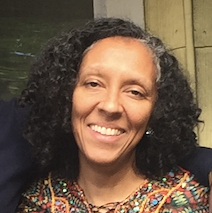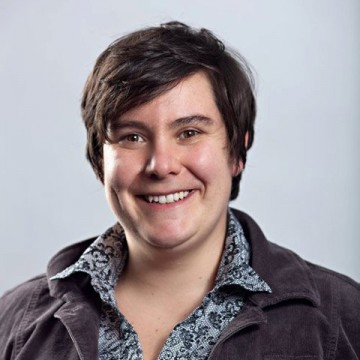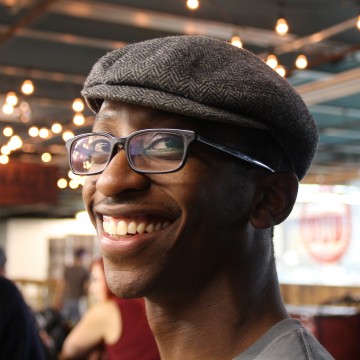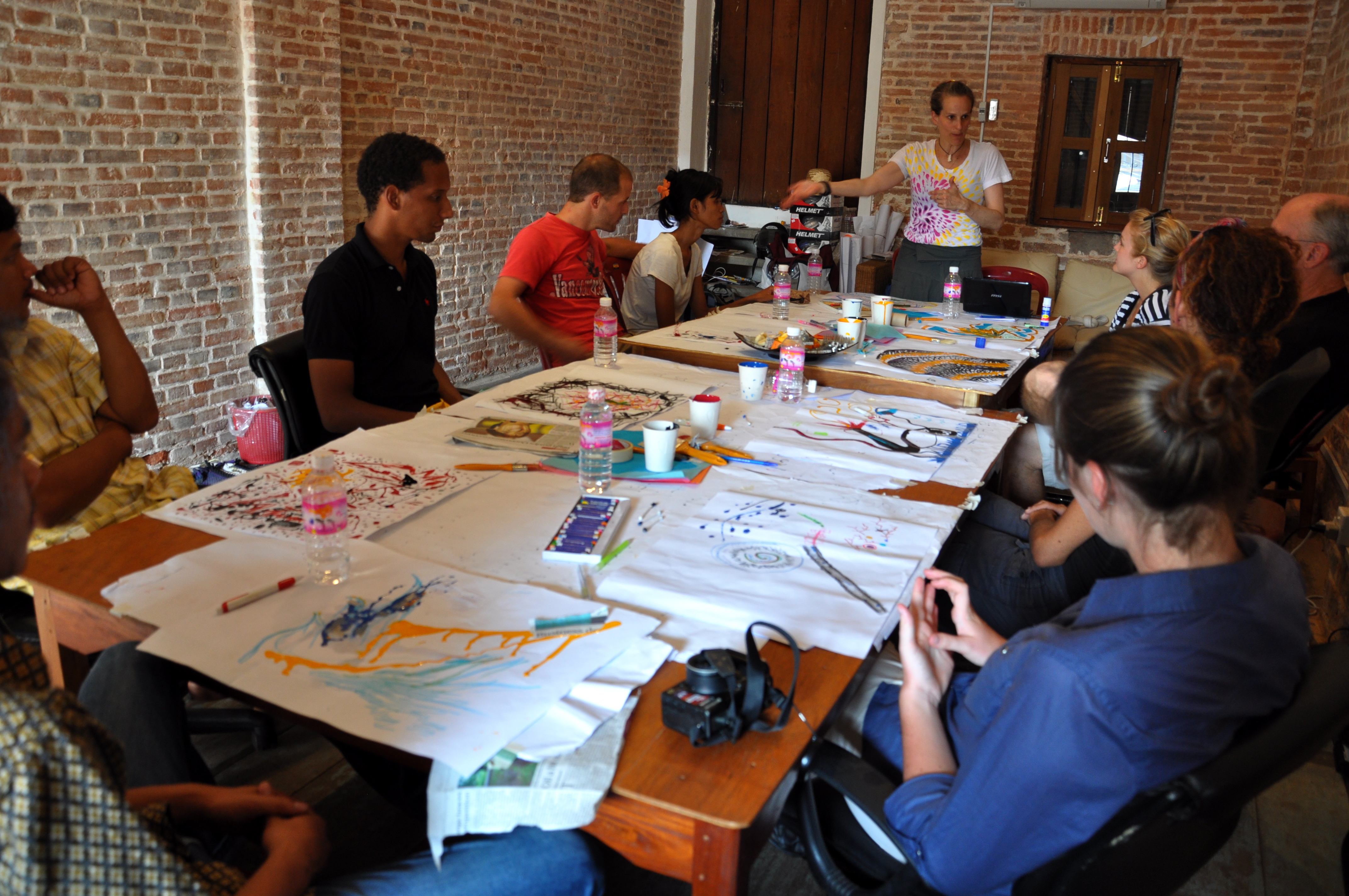Posted in Social Innovation
April 15, 2016

I almost wept as I listened to the story of Dylan Siegel. At age six, he learned that his friend Jonah Pournazarian had a rare, incurable, and fatal illness. He rejected mom’s ideas about a bake sale and decided to write a book, So Chocolate Bar, (his word for awesome) and raise a million dollars to support medical research. And he did it! Now at age nine, his efforts are funding research that just wouldn’t have happened otherwise. The disease affects so few people that there was no incentive for drug companies or researchers to pay attention. This little guy thought that was unfair and decided to do something about it. How would you change the world if the life of someone you loved depended on it? How far would you reach if the possibility of failing never crossed your mind?
Read More
February 22, 2016
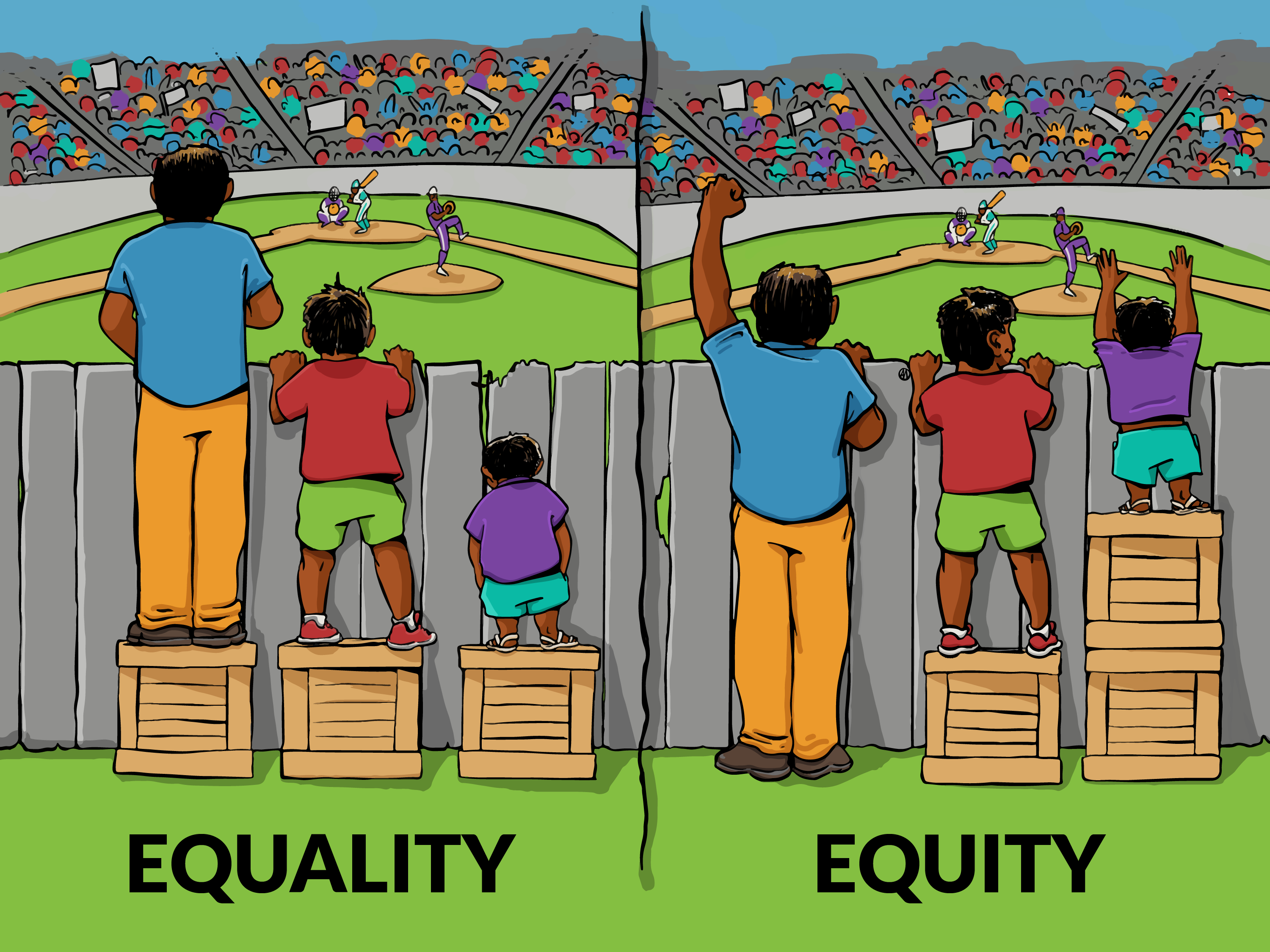
ATTENTION FRIENDS! Can you use the equality vs equity illustration in your book/video/presentation/etc?
Yes! You do not need written permission to reproduce the work. Read below for information on the license under which the illustrations are released.
In late 2015, Danielle and I collaborated with our friend and colleague, Angus Maguire, to produce the above adaptation of an old favorite (original blog post here). In the wake of the virality of the graphic on our social media channels, the three of us wanted to share a little of what we’ve been thinking since we released it into the wilds of the Internet a little over a month ago. – Lawrence
Lawrence: In all honesty, frustration was a primary driver of my interest in this project. I have seen this graphic in 15+ presentations and yet every time it seemed to be more pixelated than the last. I wanted our practitioners (and the world) to have a higher quality tool.
Angus: Collaborating with IISC on this little project was great. It wasn’t a complex project brief: essentially we set out to improve on the presentation of an internet classic. For me, it started as a great chance to experiment with a new illustration workflow – this is the first time I’ve done a cartoon like this digitally, start-to-finish. Software and hardware tools are now at a point where that’s possible for me, and I’m just getting started on the possibilities for experimentation and iteration.
Danielle: This image is popular because it creates an opening for more conversation. What works about it is that there are multiple points of entry. For the person who has never thought about equality or equity, they can see there is a difference, and begin to shift their thinking. Read More
September 16, 2015
“We are … interested in generating stories, visions and futures that are hard and realistic and hopeful.”
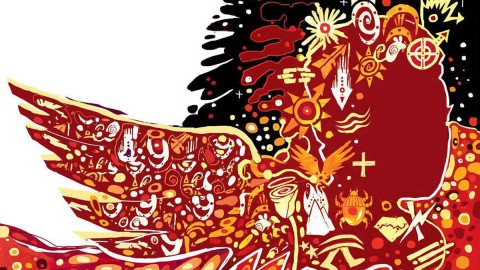
Image from octaviasbrood.com
Earlier this year I had the opportunity to sit in on a session in Detroit with Adrienne Maree Brown, writer, editor, facilitator and consultant to social movement organizations. Adrienne’s offering was on the potential of “radical science fiction” to realize empowering visions of a just and sustainable future. After sharing some of her own writing, she encouraged participants to play with a sense of imagination grounded in realistic projections of current social and environmental conditions and trends. Read More
March 16, 2015
I’ve long said that the ways in which work and organizational life are changing should be advantageous to those of us committed to social movements. Our organizational imperatives should never supersede our movement’s imperative. We should be willingly able to discard any organizational structure that does not serve our ultimate purpose. Read More
February 18, 2015
We are living through the early days of the next civil rights movement. It is an exhilarating moment. No, it does not read like the linear narrative of our history books and movement building manuals. That is because books and manuals are usually written with the benefit of hindsight to weave a story together. This movement is emergent and it takes a sharp eye to understand it.
Tip #1: You and Oprah should let go of old definitions of leadership
Jodie Tonita of the Social Transformation Project has recently published one of the sharpest articulations of leadership and how it works in the #BlackLivesMatter movement. I urge you to read it in its entirety.
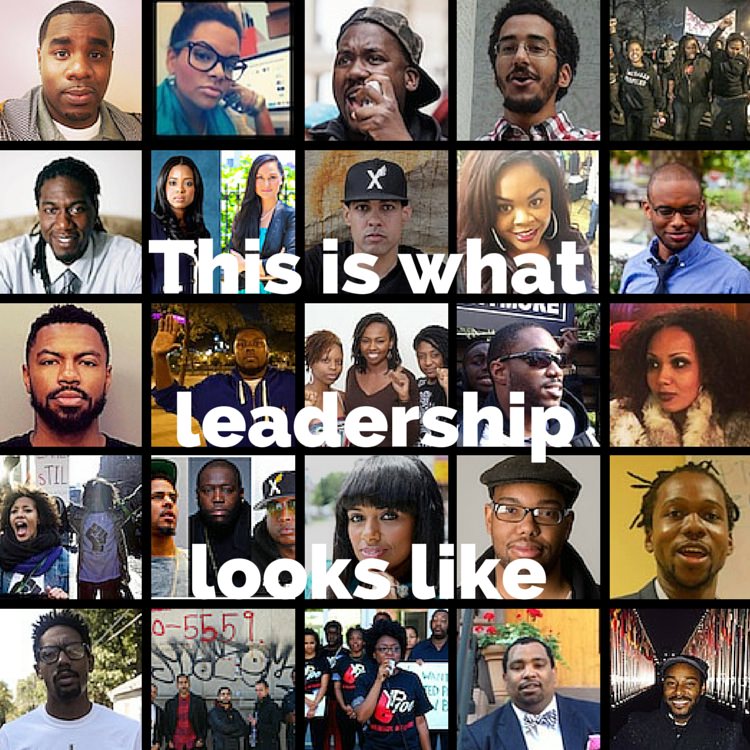
Names, bios, and more at revolt.tv.
Read More
July 30, 2014
“Re-examine all that you have been told . . . dismiss that which insults your soul.”
– Walt Whitman

Developmental theory is the source of some good healthy discussion within the Interaction Institute for Social Change. On the one hand, some point out that the notion of “stages of development” has been used to classify and oppress people, especially when theories come from privileged and powerful purveyors, are overly deterministic and linear, and do not account for cultural location and variation. On the other hand, some point to the “empowering” notion of evolution and development that can help liberate people from fixed and mechanistic views of the world and humanity. I had this all very much in mind as I read Reinventing Organizations by Frederic Laloux. Laloux brings developmental and so-called “integral theory,” including the work of Ken Wilber, into the palpable realm of organizational practice and through his research, posits an evolutionary trajectory from aggressive (Red) to bureaucratic (Amber) to achievement-oriented (Orange) to culture/empowerment-oriented (Green) to self-actualizing/authentic (Teal) organizations.
Read More
July 29, 2014
I just facilitated the 6th Creative Change Retreat at the Sundance Institute in Utah. The amazing experience leaves me grateful to my friends at the Opportunity Agenda for trusting me with the design and facilitation of such a significant convening.
Today more than ever I am convinced that the change we want to see in the world is a change that demands the evolution of consciousness and culture. As the artist and the activist come together – as they become one – we will be able to join into a different kind of intervention.
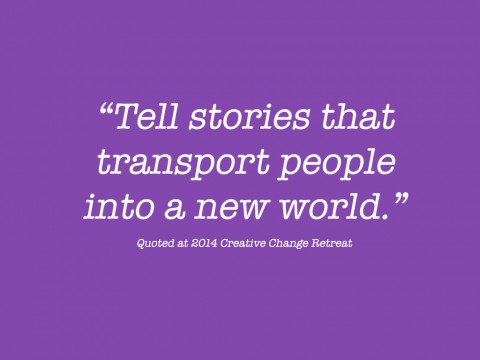 Read More
Read More
June 25, 2014
“A beautiful question is an ambitious yet actionable question that can begin to shift the way we perceive or think about something – and that might serve as a catalyst to bring about change.”
– Warren Berger

One of my favorite reads of the past six months is Warren Berger’s A More Beautiful Question: The Power of Inquiry to Spark Breakthrough Ideas. It strikes me as being an important read for any social change agent. Early on, Berger begins with the following provocative statement, that rings true to personal experience:
“Well meaning people are often trying to solve a problem by answering the wrong question.”
In some cases this is because they have not paused long enough, if at all, to consider the underlying question their efforts are trying to solve. Or, as my colleague Cynthia Parker has said, they are “solving for solution,” essentially promoting and/or fighting over their own preferred approaches. And so they continue to offer the same old, ineffective and outdated, approaches or products. This is especially problematic in a time of such change and flux, when we can’t fall back reliably on what we already know. Read More
April 1, 2014
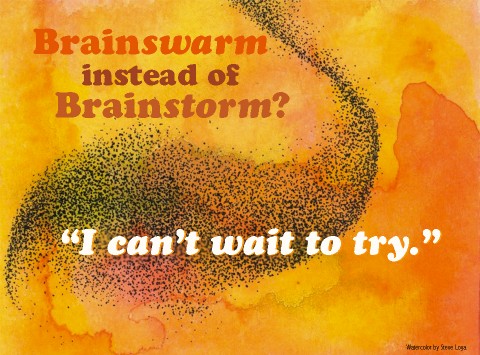
The recent barrage against the effectiveness of brainstorming has been a bit hard for those of us who are grounded in the Interaction Method. But evidence matters, doesn’t it? I know that Curtis has talked about the limits of brainstorming a couple of times in this blog. Read More
February 24, 2014

Enjoy these simple and powerful guidelines from Beth Kanter about how movement makes meetings and workshops more productive. This is great advice for getting beyond designing for “brains on sticks” as my colleague Curtis Ogden likes to say.
As a trainer and facilitator who works with nonprofit organizations and staffers, you have to be obsessed with learning theory to design and deliver effective instruction, have productive meetings, or embark on your own self-directed learning path. Learning theory is an attempt to describe how people learn. There are many learning theories and can be categorized in different ways:
Read More
May 8, 2013

|Photo by Mike Licht|http://www.flickr.com/photos/notionscapital/6786051819|
Sometimes people call openness in group process and social engagement “disorganized” or “unstructured.” I find this to be a misperception and, frankly, unhelpful. Openness is differently organized and structured. It is different from many of the talking-at, entertainment-oriented, consumer-creating, and being-numbing settings to which we have grown accustomed.
Openness can certainly create discomfort, in part because it calls on us to step up and reach out, not hunker down and hide. It asks us to take responsibility and consider questions like, “What do I value?” “How do I want to contribute?” “What can we create here?” Openness is opportunity if we choose to act, knowing that through the perceived risk and any felt discomfort lies greater purpose, meaning and vitality.
April 10, 2013

|Image by Andy Mangold|http://www.flickr.com/photos/andymangold/4335799638/in/photostream|
In his post yesterday, Seth Godin offers up sage advice for designers of all kinds, including “social architects” like ourselves who are aiming to create convenings and collaborative processes that bring out the best in people and lead to greater social justice and regenerativity. Among his points: Read More

